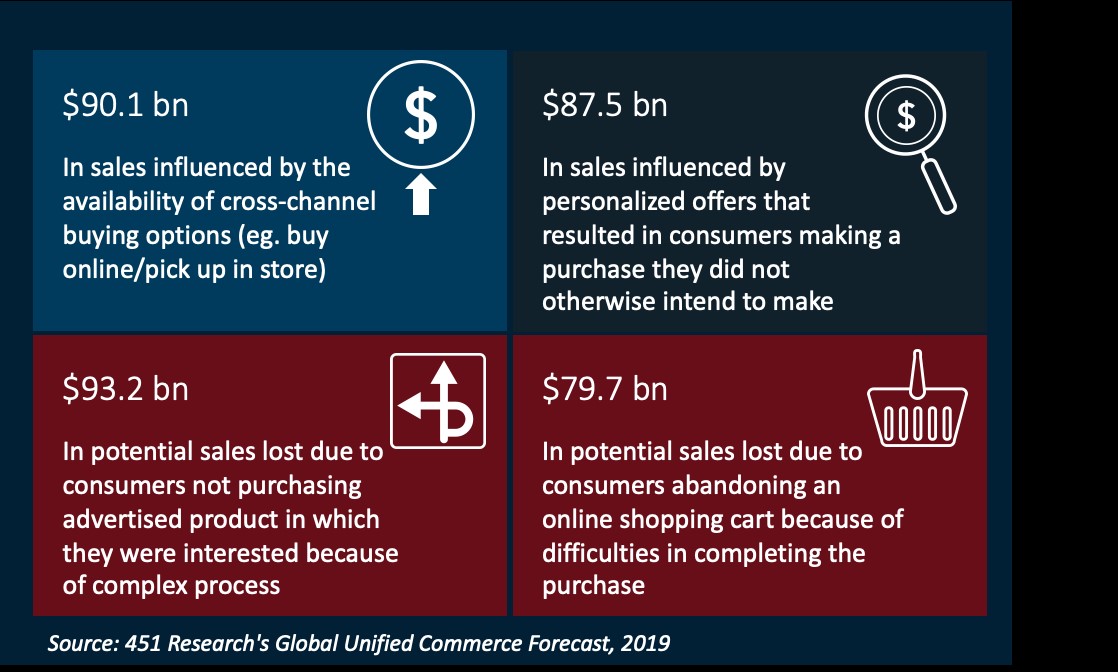We live in a data-driven world. With touchpoints rapidly multiplying, consumer data continues to increase in volume and complexity. Insights derived from these touchpoints are crucial to improving the context of customer experiences.
Investments in digital transformation to achieve a 360-degree customer view are now a necessity. Businesses need to be more creative in the ways they engage customers to succeed in this landscape, not only through investment in new technologies such as artificial intelligence for personalization but also through a commitment to rich personalized storytelling to generate unique experiences that both attract and retain customers.
And there are great opportunities but also some traps. These numbers were taken from research that took place in 2019 but it looks like now, in 2020 impacted by a covid 19 pandemia it seems more than relevant, mostly due to the fact that the majority of consumer interactions moved to digital space where the competition is enormous.
Competition grows and at the same time, the moment you can attract customers and react, shrinks. We are talking about 1-2 minutes or even seconds which are left for you to attract customers with a relevant offer…
The paradigm of the right time, right offer, is now a key for moving your business forward. It’s no longer a buzzword.
The complexity of your sales processes which might be ok 2-3 years ago does not work now… inability to follow and impact customers decisions, results in significant losses. And that’s all because we are in a new reality. I always was telling this but nowadays it seems really adequate…
Businesses have strived for decades to establish a unified and comprehensive picture of the customer experience, yet the coveted 360-degree view remains unattainable. An ever-increasing number of intelligent devices coupled with expanding connectivity has led to considerable growth of data. The most meaningful and contextual customer experiences are data-informed; thus, to remain competitive in this landscape and maximize the potential for insight, businesses need to make new investments in customer intelligence platforms (CIPs).
68% of digital leaders are investing in newer digital platforms that enhance customer experience and business agility, allowing them to capture and analyze this data to create informed, personalized experiences.
CIPs do more than provide a unified view of the customer; they apply contextual AI to synthesize data, converting raw data into relationship discovery This is a step further than past approaches from master data management (MDM), CRM, customer data platform (CDP) and data management platform (DMP) vendors where the view on customers was blurred by traditional analytical models, which were generalizing the customer behavior just for the sake of problem complexity reduction.
So, the new holy grail is to really treat every and single customer or visitor as a single segment as everyone is expecting a unique approach. In other words, this is the expectation of a hyper-personalized business, where the goal is to maximize the context and relevance which cannot just rely on generalized knowledge derived from models. And that’s the new trending direction that we can observe amongst enterprises like banks, telcos, and retailers.
From one side, this really brings a concrete value to organizations, as it provides the ability to leverage each and every interaction with customers into an actionable item. But there are also some difficult requirements that need to be fulfilled. Among one the most important is models’ operationalization which plays a key role in provisioning tons of models into the production environment, along with the ability to monitor them, supervise, retrain and provide the ability to learn. In the next blog post, I will try to explain how SAS enables hyper-personalization along with model-ops technologies.



1 Comment
nice to share